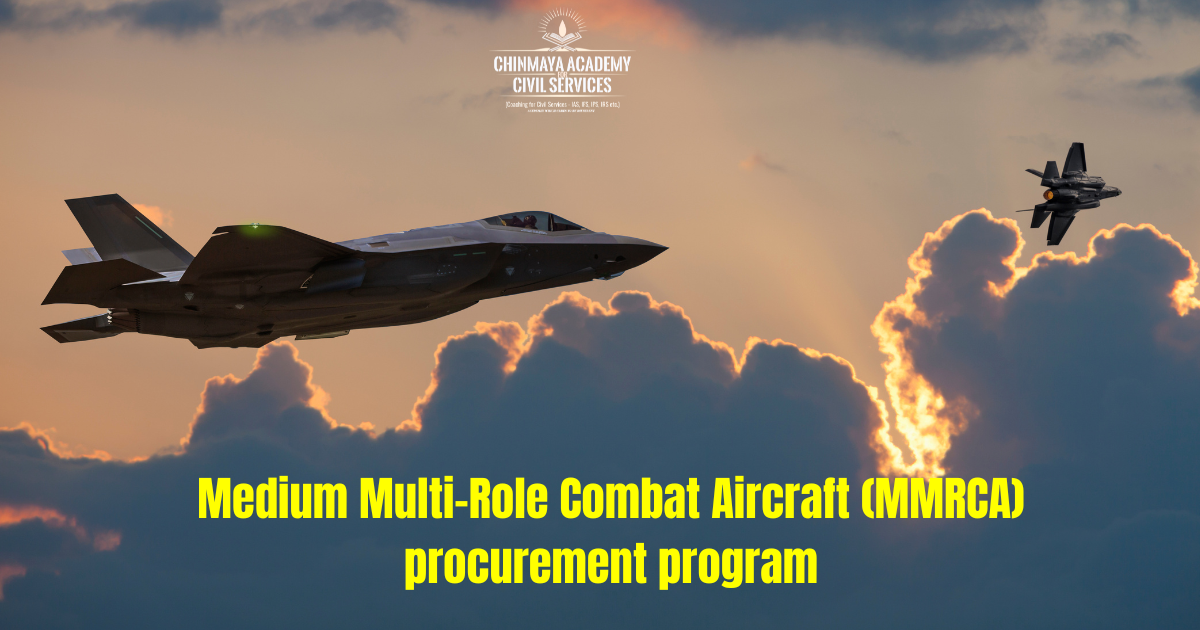India’s Medium Multi-Role Combat Aircraft (MMRCA) procurement program
India’s Medium Multi-Role Combat Aircraft (MMRCA) procurement program was ambitious to bolster the Indian Air Force (IAF) with 126 modern fighter jets.
Launched in 2007, it quickly became one of the world’s largest defence deals, attracting bids from six major global manufacturers:
- Dassault Rafale (France): A 4.5-generation fighter known for its agility and advanced avionics.
- Eurofighter Typhoon (Germany, Italy, Spain, and the United Kingdom): A 4.5-generation fighter focusing on air-to-air combat.
- Boeing F/A-18E/F Super Hornet (United States): A multirole fighter jet used by the U.S. Navy and Marine Corps.
- JAS 39 Gripen (Sweden): A lightweight, cost-effective MMRCA used by several countries, including Sweden, Brazil, and Thailand.
- MiG-35 (Russia): A derivative of the MiG-29 fighter, designed for improved performance and avionics.
- Saab JAS-39 Gripen NG (Sweden): An upgraded version of the Gripen, with a more powerful engine and enhanced capabilities.
The selection process was rigorous, with each aircraft evaluated based on various criteria
- Technical performance: Speed, agility, weapons payload, radar capabilities, etc.
- Cost: Acquisition and maintenance costs.
- Transfer of technology (ToT): Willingness to share technology with India for local production.
- Offsets: Investments made in India by the winning bidder.
After years of evaluation and political debate, the program reached a critical juncture in 2015 when the IAF shortlisted two contenders: the Rafale and the Gripen NG. However, the program ultimately did not result in the purchase of the 126 aircraft as initially planned.
Several factors contributed to this outcome:
- Budgetary constraints:The rising cost of the program made it increasingly difficult to justify.
- Political considerations:Political disagreements and criticism over the procurement process played a role.
- Shifting priorities:The IAF’s focus shifted towards acquiring a smaller number of high-end fifth-generation fighters, like the Rafale, alongside developing its own indigenous fighter jets.
Despite not achieving its initial goal, the MMRCA program was a significant chapter in India’s defence modernization efforts. It showcased India’s growing strategic aspirations and highlighted the challenges of navigating complex military procurement processes.
Points to consider
- The IAF eventually procured 36 Rafale jets in a separate government-to-government deal with France in 2016.
- India is actively developing its own fifth-generation fighter aircraft, the HAL AMCA, aiming for self-reliance in advanced fighter technology.
- The future of large-scale MMRCA acquisitions for India remains uncertain, with the focus likely on smaller numbers of high-end fighters and indigenous development.
Additional Facts
- The program’s complexity and controversy generated significant public discourse and media coverage.
- It contributed to India’s evolving relationship with major arms suppliers like France and the US.
- Lessons learned from MMRCA are influencing future Indian defence procurement strategies.
 Chinmaya IAS Academy – Current Affairs Chinmaya IAS Academy – Current Affairs
Chinmaya IAS Academy – Current Affairs Chinmaya IAS Academy – Current Affairs
